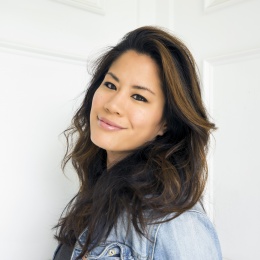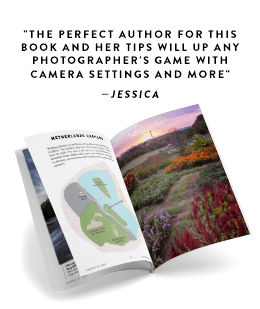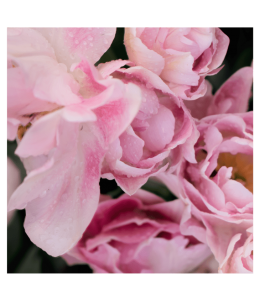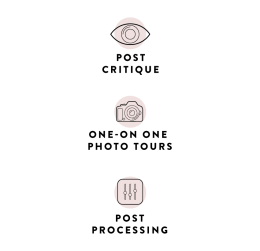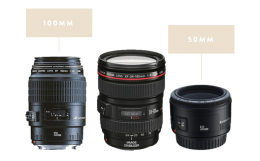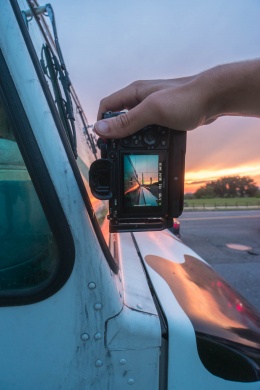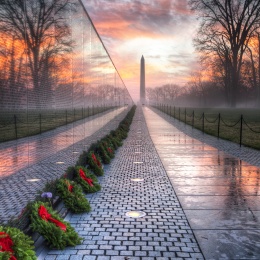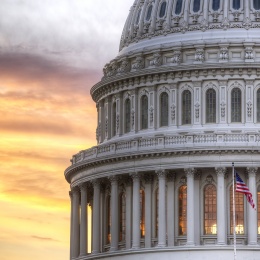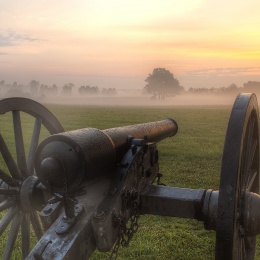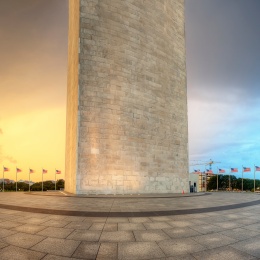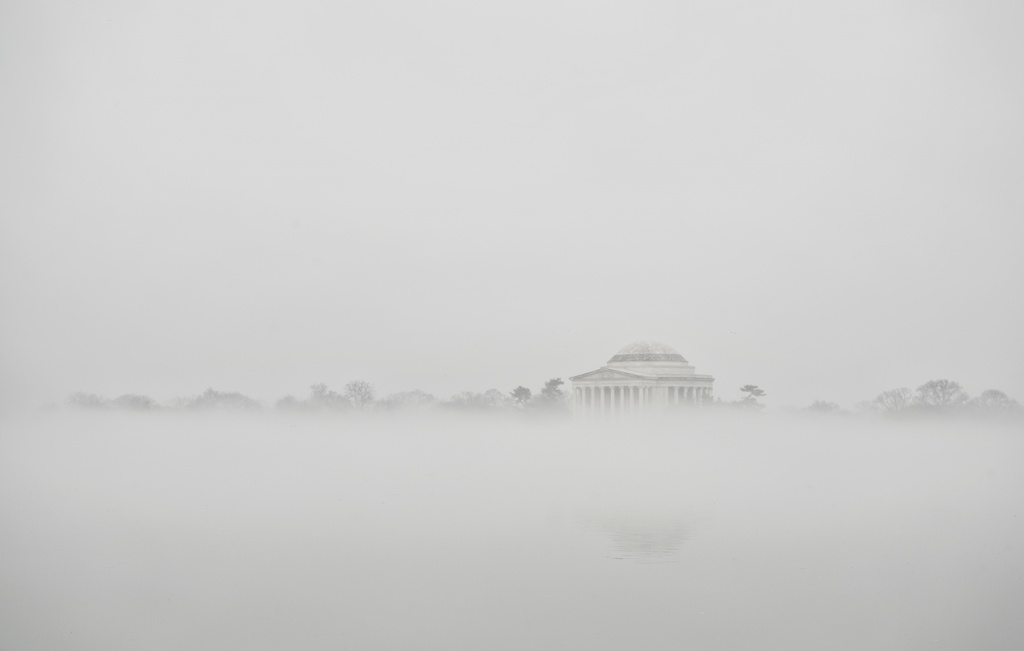It all started when I saw a photograph similar to this one. I had never seen anything like it before.
I feel in love with the way it was so mysterious and the way it made the Jefferson Memorial look so obscure. Even though I had photographed a little bit of fog in 2012, I didn’t know it could get this foggy in the city until I saw that particular image.
I’m sorry I don’t have a link to the original image anymore, but I studied that picture. I wanted to know exactly where the photographer was standing and tried to figure out different ways I could have potentially captured it.
It finally happened to me on Christmas Day 2015. I woke up early for sunrise since my family doesn’t celebrate until later in the evening. I figured the best way to start off the day would be to take a quick morning walk around the National Mall. I checked the weather and it said it was going to be unseasonably warm, so why not.
I don’t remember how long the fog took to appear but I do remember it was quite a bit after sunrise. When it first started forming, I was over by the Potomac River. I had never seen fog just appear out of nowhere but something triggered in my head that if it was starting to form on the river, maybe it was forming at the Tidal Basin. I walked over as quickly as I could and there it was! It was the white Christmas I never knew I wanted.
After that, I became obsessed with finding out more about fog. How to capture it, when it was going to happen and all the best places in the Washington DC area to photograph it.
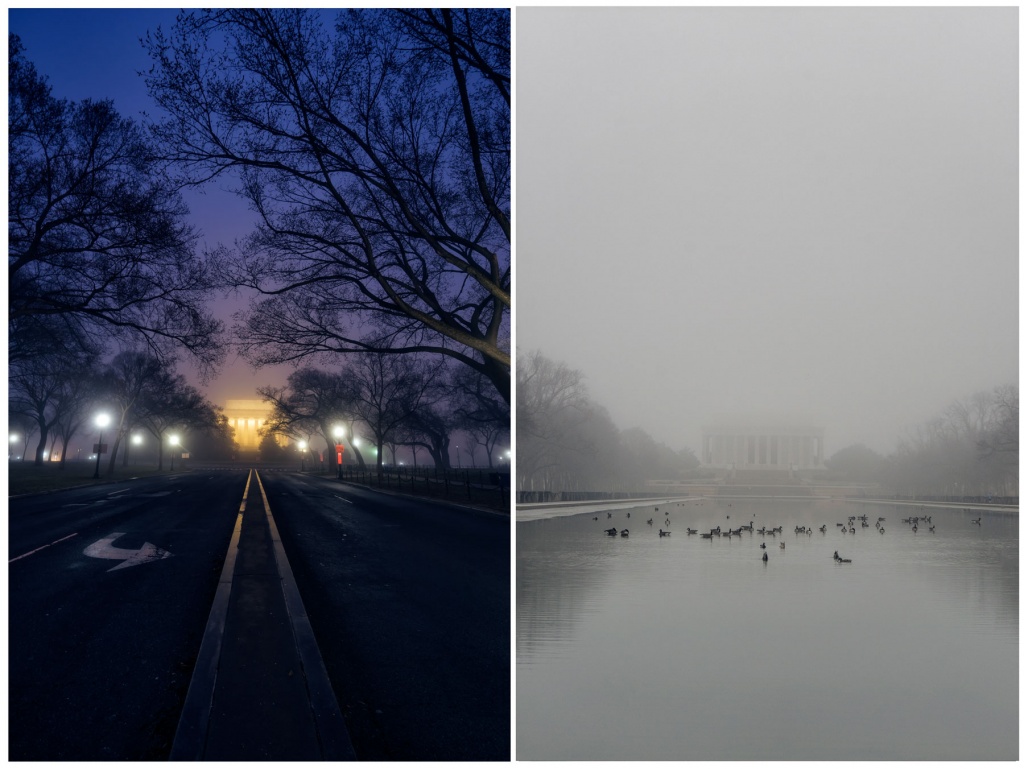
The Lincoln Memorial on a foggy morning. (L) Predawn (R) 20 minutes after sunrise
So here’s what I learned:
Obviously, if you pay attention to the weather or check weather apps, it will tell you if it’s going to be foggy. But more times than not, I’ve found that they will say “cloudy” as opposed to foggy when it’s actually foggy out.
So what I’ve learned is that fog will very likely appear when there is a drastic temperature change in a certain amount of time. Drastic meaning a rise of at least 10 degrees and a certain amount of time could be anywhere from an hour to overnight. The longer the period, the less likely there will be fog, but there’s still a chance. So pay attention if you’re listening to weather reports when the meteorologist says there is a warm front coming in.
Second, I learned that fog can happen at any time of the day. It doesn’t necessarily have to happen at sunrise. It could come and go day or night. It can even happen when it’s sunny out.
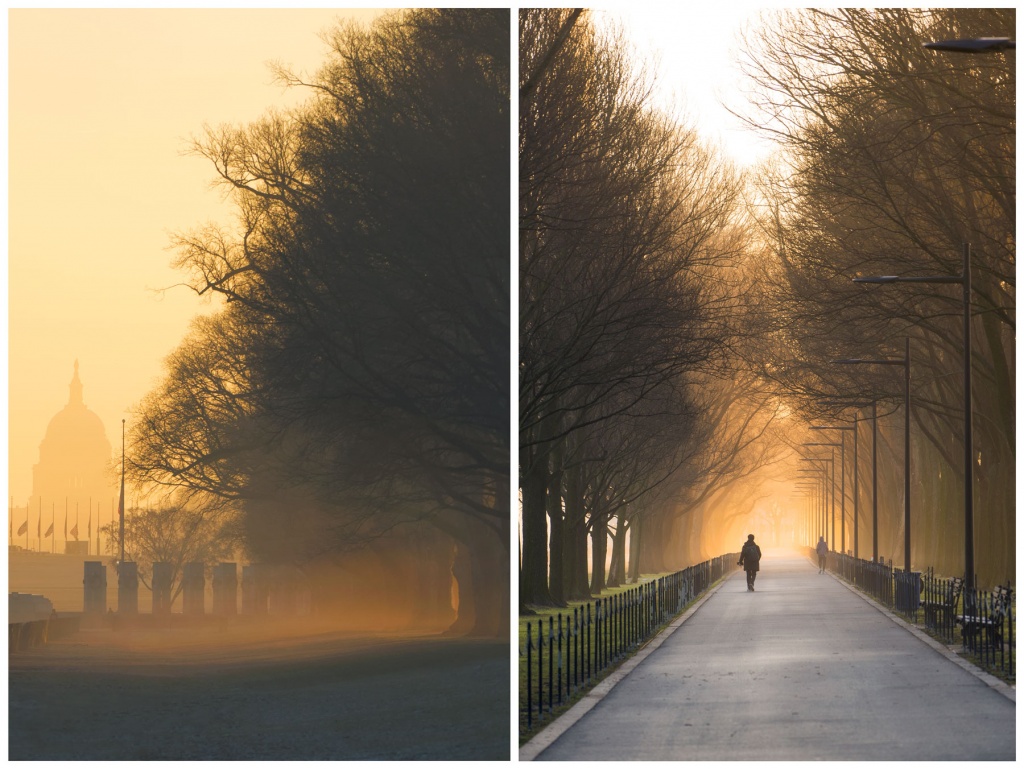
Captured along the pathway next to the Reflecting Pool
My favorite memorial to photograph in the fog is the Washington Monument. Even though it’s the tallest structure in the National Mall, it’s so interesting to see how the fog plays with it.
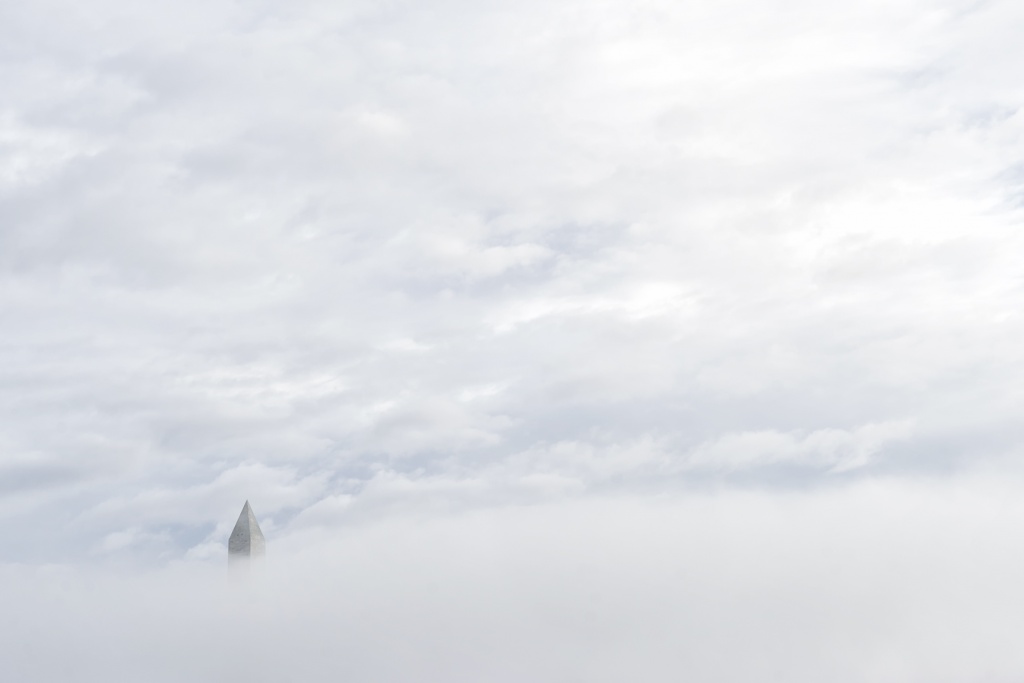
The fog covering most of the Washington Monument except for the very top
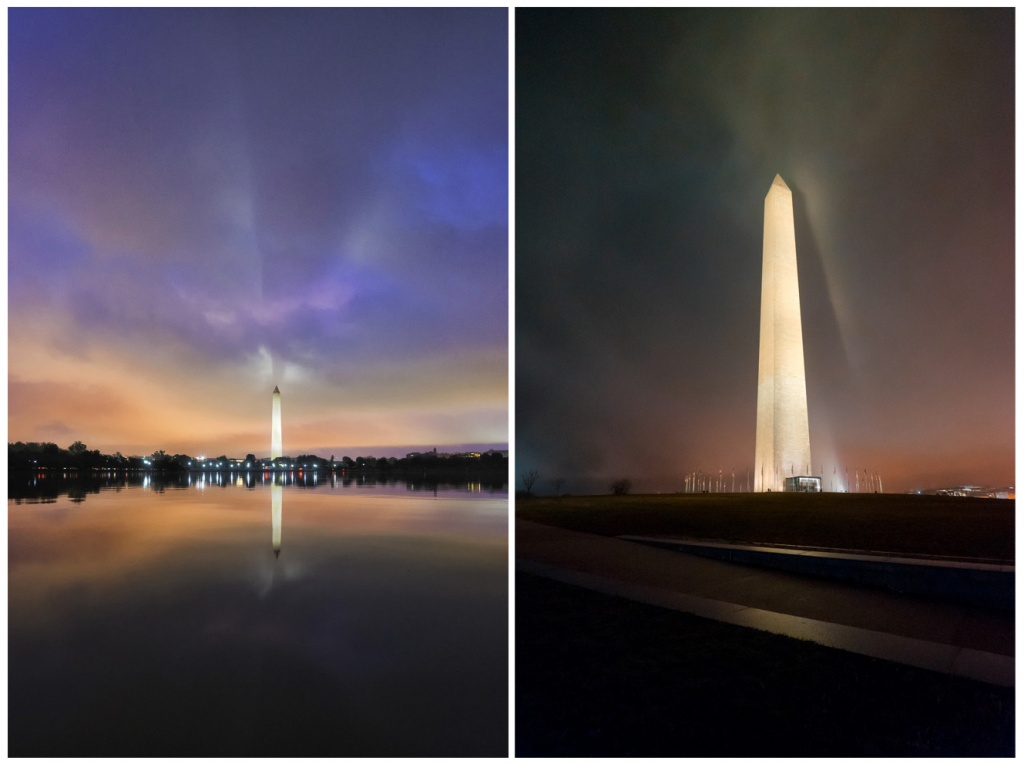
The fog helped create interesting shadows in the sky (L) Captured from the Tidal Basin just after sunset (R) Captured along the walkway to the Washington Monument
After I figured out how fog forms, I also learned that it’s best around bodies of water. It makes sense, but it can even be a small body of water like the Lincoln Memorial Reflecting Pool or even the US Capitol Reflecting Pool.
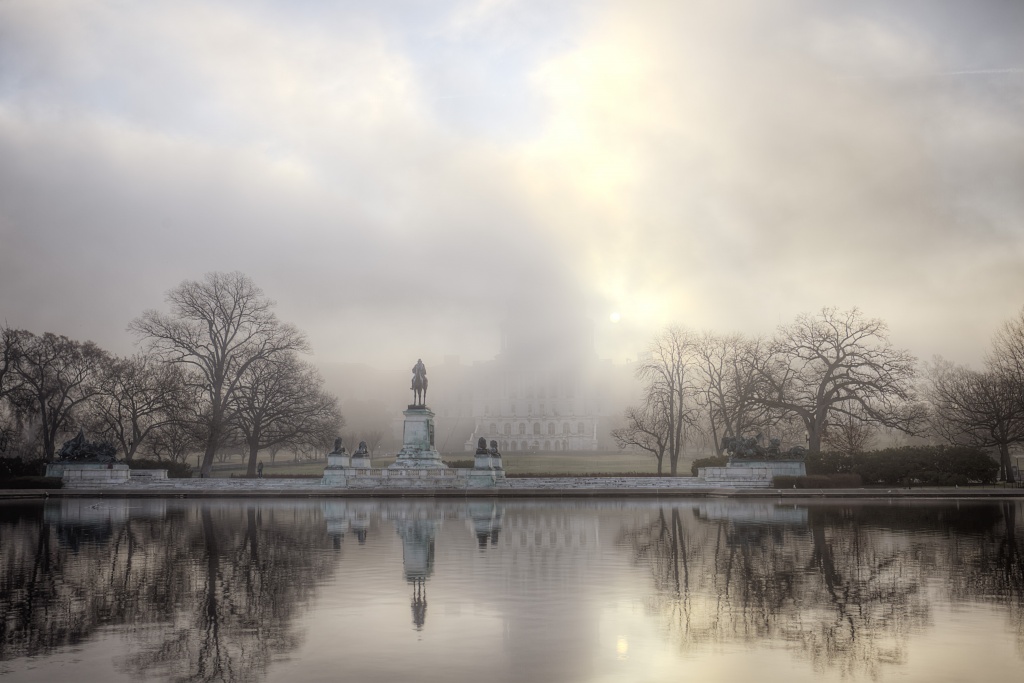
The thick fog that made the US Capitol almost disappear
A few more examples of fog around Washington DC:
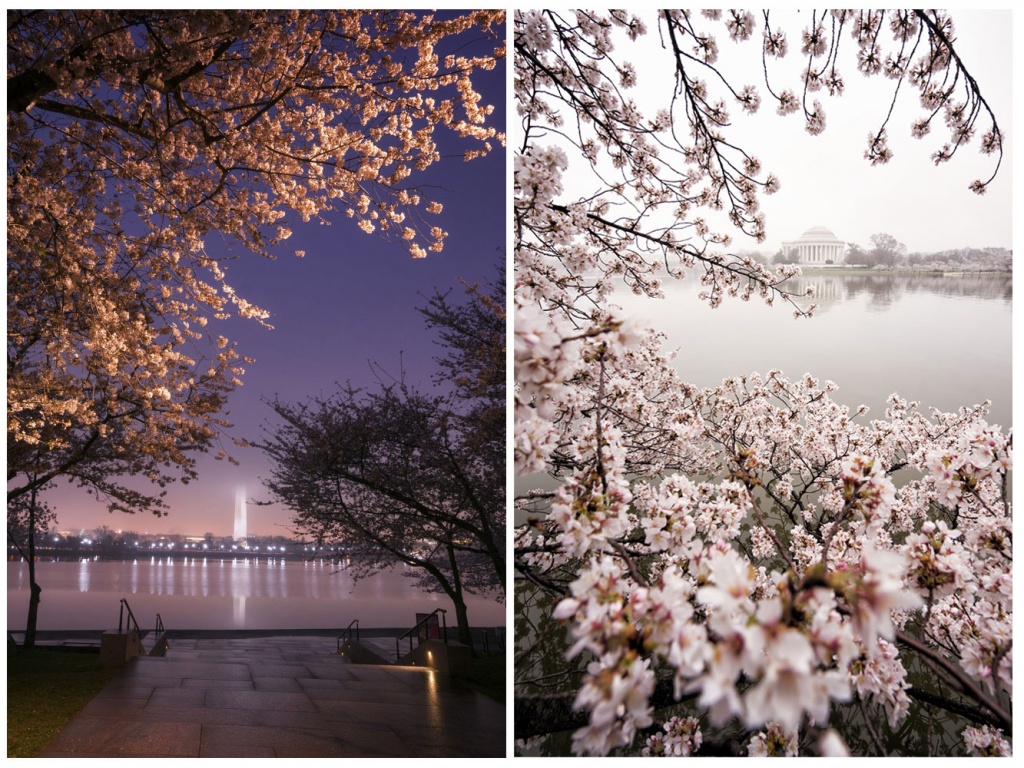
I feel extra lucky when there’s fog during cherry blossom season.
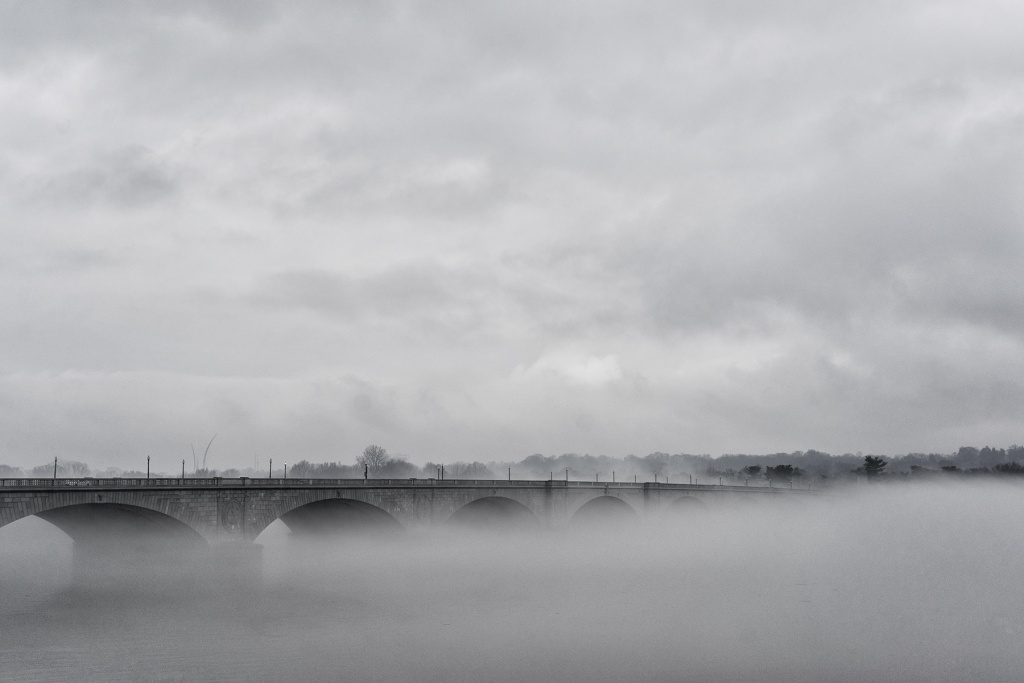
The fog surrounding the Arlington Memorial Bridge.
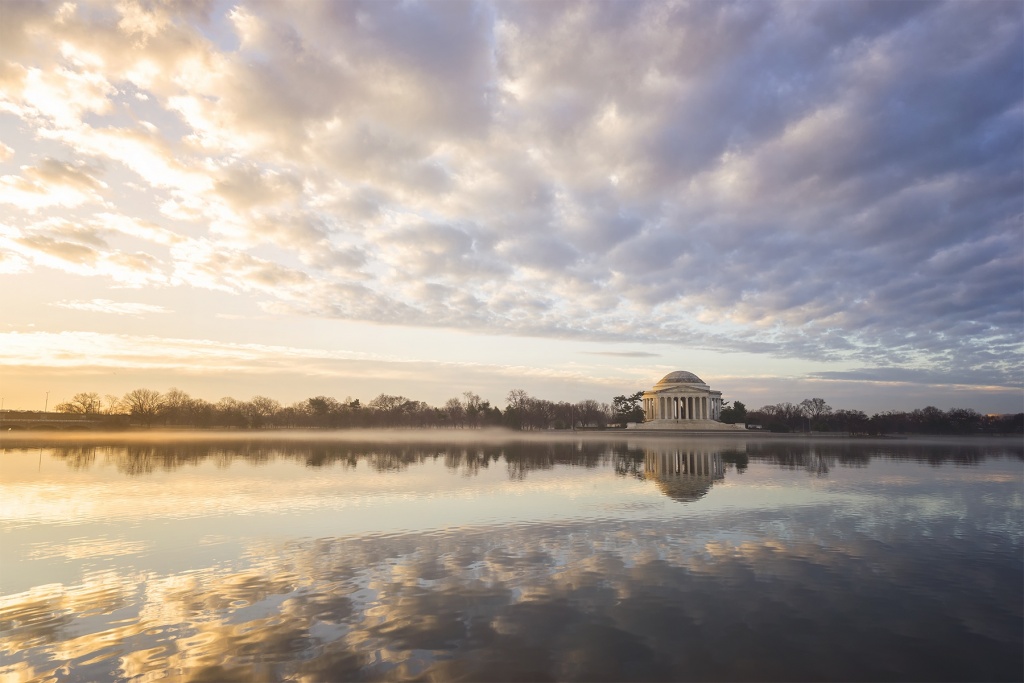
As the fog was disappearing at sunrise.
So I hope this inspires you to go out and shoot even when it’s not a blue sky day. Uncommon weather like fog can make a city look completely different. It can reduce visibility and make everything so mysterious and at times magical. It’s definitely one of my favorite times to shoot whether in Washington DC or travel. If you’ve found this guide useful, please pass it along to all your photo/weather loving friends.
Happy Snapping!
